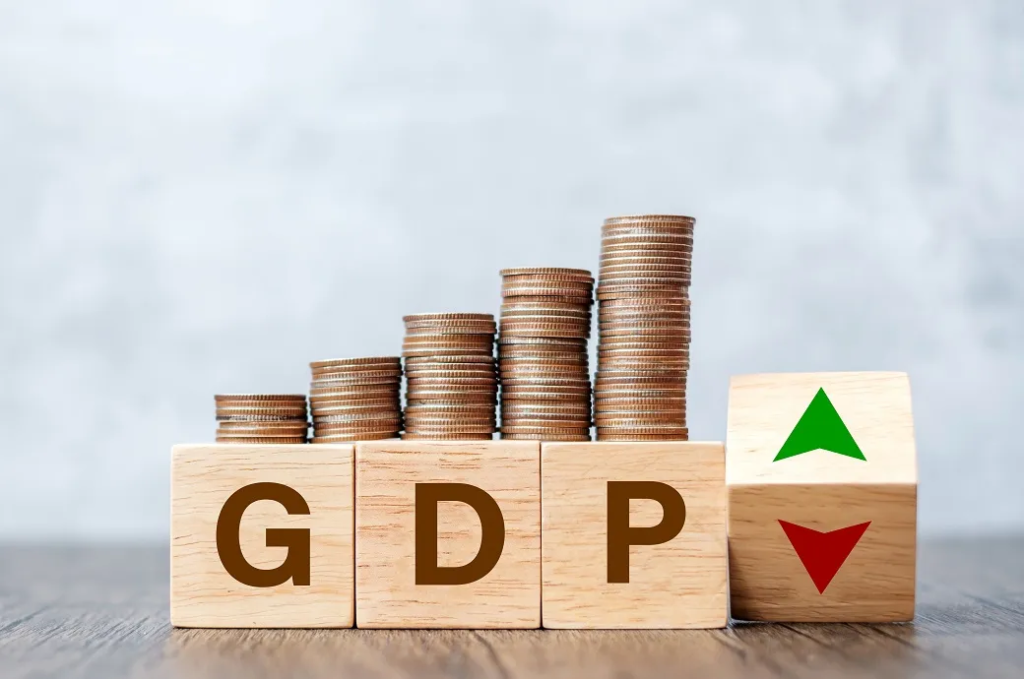Introduction
If you follow economic news or investment analysis, you’ve probably heard the term GDP countless times. Headlines often celebrate a country’s GDP growth or warn of a shrinking GDP during recessions. But what exactly is GDP, how is it calculated, when did economists begin using it, and why is it considered one of the most important metrics in finance?
For beginner and intermediate investors, understanding GDP is essential. It provides insights into a country’s economic health, influencing everything from stock market performance to foreign investment decisions. In this article, we’ll explore GDP in detail—its definition, the methods used to calculate it, its historical origins, and why it remains a vital key performance indicator (KPI) for economies around the world.

What Is GDP?
GDP (Gross Domestic Product) is the total monetary value of all goods and services produced within a country’s borders over a specific period, usually a year or a quarter.
Think of it as the ultimate scorecard for an economy:
- When GDP is growing, the economy is generally expanding.
- When GDP contracts, it often signals slower activity, job losses, or even a recession.
For investors, GDP serves as a window into how businesses, consumers, and governments are performing collectively. A rising GDP often translates to higher corporate earnings, increased consumer spending, and potentially better returns on investments.
How Is GDP Calculated?
Economists use three main approaches to calculate GDP. While each method measures different components, they all lead to the same overall figure when applied correctly.
1. Production Approach
This method sums up the value added at each stage of production across all industries.
Formula:
GDP = Output Value – Intermediate Consumption
2. Expenditure Approach (most commonly cited in finance)
Here, GDP is calculated by adding up all spending in the economy:
Formula:
GDP = C + I + G + (X – M)
Where:
- C = Consumer spending
- I = Investment by businesses
- G = Government expenditure
- X = Exports
- M = Imports
For example, when Portugal exports wine or textiles, those sales increase GDP. When it imports raw materials, those purchases are subtracted.
3. Income Approach
This method looks at all incomes earned within the country: wages, profits, rents, and taxes (minus subsidies).
Formula:
GDP = Compensation of Employees + Gross Operating Surplus + Taxes on Production and Imports – Subsidies
Each approach gives economists a different lens on the same economy, helping ensure accuracy and highlighting which sectors drive growth.
When Did Economists Start Using GDP?
While the idea of measuring national income dates back centuries, the modern concept of GDP took shape in the early 20th century.
- 1930s: Economist Simon Kuznets developed a comprehensive framework for the U.S. government to measure national output during the Great Depression.
- 1944: At the Bretton Woods Conference, GDP became the standard metric for international economic comparison, replacing older measures like Gross National Product (GNP).
Since then, GDP has been adopted globally as the go-to benchmark for economic performance. Today, organizations like the International Monetary Fund (IMF), World Bank, and OECD rely on GDP data to assess growth, set policy recommendations, and monitor global trends.
Why Is GDP Important?
For governments, businesses, and investors alike, GDP is much more than just a number. Here’s why this KPI is crucial:
Economic Health Indicator
GDP reveals whether an economy is expanding or contracting. A growing GDP typically signals rising incomes, higher employment, and stronger consumer confidence—factors that boost stock markets and attract investment.
Policy Making
Central banks and governments monitor GDP closely to shape monetary and fiscal policies. For instance, if GDP growth is slowing, a government might reduce taxes or increase public spending to stimulate the economy.
International Comparisons
GDP allows comparisons between countries, helping investors identify high-growth regions. A country with a rapidly growing GDP often signals opportunities in sectors like real estate, technology, or manufacturing.
Investor Insights
Stock markets often move in line with GDP trends. Companies tend to perform better in expanding economies, making GDP growth a valuable input when deciding where to allocate capital.
Limitations of GDP (and Why It’s Still Valuable)
While GDP is a powerful tool, it’s not perfect:
- It doesn’t account for income inequality or environmental sustainability.
- It overlooks informal economic activity (like small cash-based services).
- It measures quantity, not quality, of growth.
However, despite these limitations, GDP remains the most widely used economic indicator because it provides a clear, standardized, and regularly updated snapshot of economic performance.
Conclusion
Understanding what GDP is, how it’s calculated, when it began being used, and why it matters is fundamental for anyone interested in finance or investing. GDP reflects the pulse of an economy, guiding policymakers and signaling opportunities for investors. Whether you’re analyzing stock markets, considering real estate investments, or simply trying to make sense of financial headlines, keeping an eye on GDP will sharpen your decision-making and deepen your understanding of the global economy.

Leave a Reply